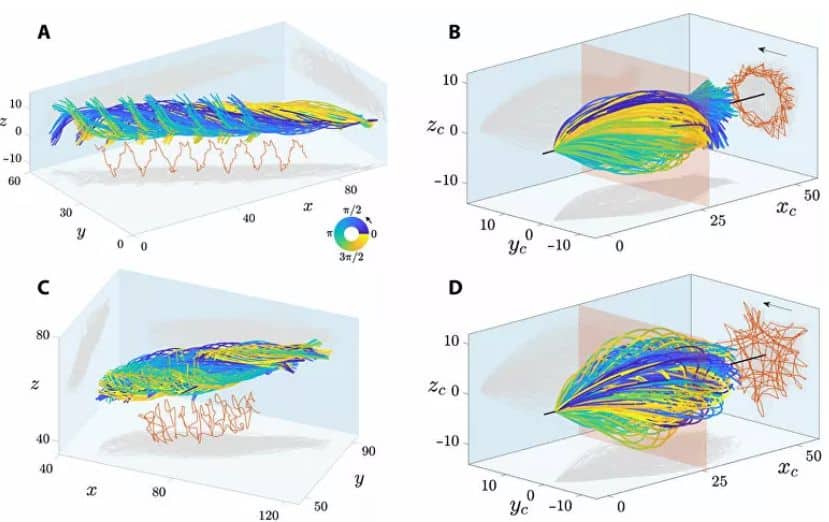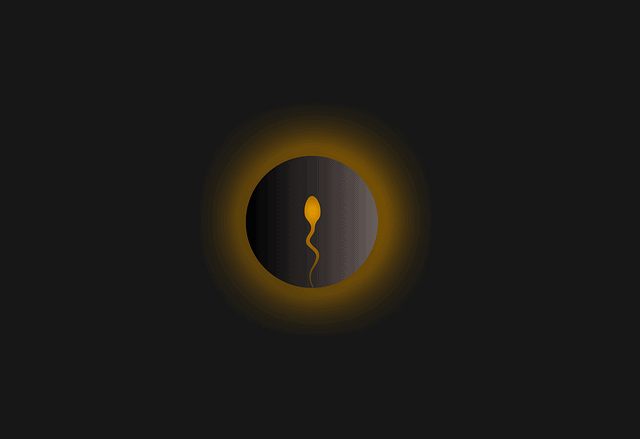Researchers from the University of Bristol, United Kingdom, and the National Autonomous University of Mexico discovered the true way in which sperm swim. The truth is that it has nothing to do with how we thought it was until now. The results shed light on the problem of male infertility.
If you remember some old biology class, in which they explained the human fertilization process through a drawing or animated video, you will surely remember the small sperm swimming towards an egg in order to fertilize it.
Similar to microscopic tadpoles, science believed that sperm swam similar to the way an eel does, with a tail that swings from side to side and allows it to move linearly.
This was described by Anton van Leeuwenhoek, a Dutch merchant who first observed sperm under a microscope, an instrument he was commissioned to refine during the 17th century.
However, it turns out not. Latin American researchers from the University of Bristol, United Kingdom, and the National Autonomous University of Mexico, made new observations of sperm movement using 3D microscopy and came to an unprecedented conclusion: it had all been an optical illusion.
In 1677, Leeuwenhoek had explained that “the fast and highly synchronized turning of sperm causes an illusion when viewed from above with 2D microscopes: the tail appears to be symmetrical from side to side.”
Now, 3D microscopy used in research at the British and Mexican universities was able to reconstruct the movement of these cells in three dimensions, through the use of a high-speed camera that records 55,000 frames in just one second.
How do sperm swim?
In reality, sperm do not have a linear or symmetrical swim. Instead, since their tails hit only one side, what they do is move in a rotary way. At normal speed, this creates the optical illusion that its tail is moving from side to side as a snake does.
“Human #sperm are more spinners than swimmers. Revolutionary research in @ScienceAdvances has unravelled this miraculous move,” the University of Bristol reported via Twitter.
https://twitter.com/BristolUni/status/1289262187832369153
A priori, the true movement of these iconic male reproductive cells would prevent them from advancing toward the egg. “Human sperm figured out if they roll as they swim, much like playful otters corkscrewing through water, their one-sided stoke would average itself out, and they would swim forwards,” noted Dr Gadelha, head of the Polymaths Laboratory at Bristol’s Department of Engineering Mathematics and an expert in the mathematics of fertility.
“If someone did this in a pool and swam to one side, they would always swim in circles,” he illustrated. But then how do they go forward?
“However, our discovery shows sperm have developed a swimming technique to compensate for their lop-sidedness and in doing so have ingeniously solved a mathematical puzzle at a microscopic scale: by creating symmetry out of asymmetry,” said Dr Gadelha.

In this way, while the tail turns to one side, the head of the cell turns simultaneously with the tail of the sperm, creating what in physics is known as precession, similar to the way in which Earth or Mars precess around the Sol, clarified the mathematician.
Responses to infertility
Since more than half of infertility is due to male problems, understanding the true workings of the fertilization process is critical to developing diagnostic tools to identify unhealthy sperm, the study explains.
3D microscopy may be the answer to understanding the phenomenon of natural fertilization, and to face the difficulties that this process may entail, the investigation concludes.
